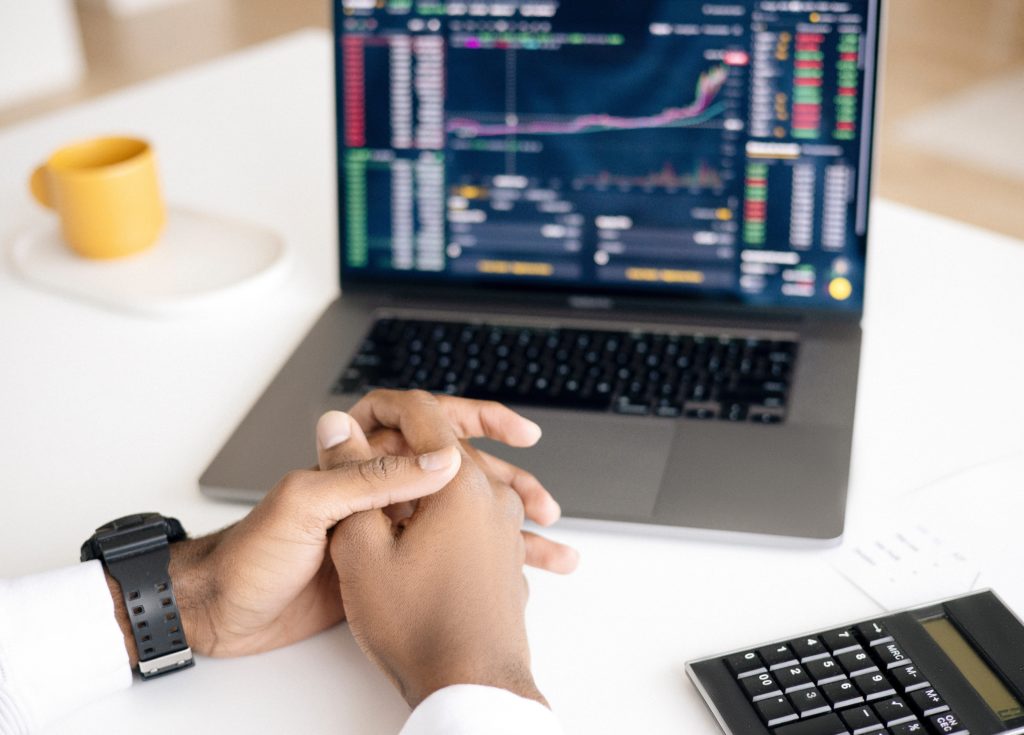Annual Trade Frequency
Annual Trade Frequency
As you’ve likely already seen by using our calculator, Annual Trade Frequency can have a significant impact on the annualized returns a person can expect. That said, traders should not try to force a higher trade frequency simply because of the impact it can have on an account.
While it’s true that a higher trade frequency can lead to a larger number of winning trades, it will also lead to a higher number of losses. No trading frequency is inherently better than another though there are tradeoffs. Before looking at the tradeoffs, understand that the best frequency for a trader is one that balances four things:
- The amount of time available for researching and monitoring trades
- Size of the trade account
- Desired asset class or trading strategy
- Needs or capabilities of the trader

Each of these four things may act as constraints limiting the number of trades that may be taken each week. For example, a trader having only an hour or two each week will not be able to take as many trades as a person who can spend several hours a day. That said, a person with time constraints may be able to increase their trade frequency by subscribing to alert services which automates the process of finding good trade ideas or monitoring their exits.
Matching a desired trade frequency with the actual frequency of good trading ideas will help a trader avoid the pitfalls of lost time and missed opportunity caused by waiting too long between trades or an inability to take all the trades presented.
Remember, trading done right is a game of probabilities. If a trader must choose between the trades their alert service or trade idea generating process provides, there is a chance they might choose only the worst performing ones.

Historically, trading was expensive and people were counseled to trade less frequently because of high transaction costs. These costs have now dropped dramatically, removing a barrier to a higher trading frequency. This means a wider variety of trade frequencies can be considered.
When contemplating trade frequency, always think of it in terms of a desired annual trade frequency which is expressed as a number of trades per week. So, if a trader desired to place 200 trades a year, they’d need to set a goal of placing (and closing) about 4 trades a week.
Higher trading frequencies can contribute to a higher expected annual rate of return and it can be tempting to focus only here. However, those with higher trading frequencies will also experience the likelihood of longer losing streaks and bigger maximum drawdowns in their account. Spend some time contemplating this downside to a higher trading frequency.
Some traders prefer a higher trade frequency because if any one trade doesn’t work out, another one will quickly come along that does. Other traders may not like having the emotional reaction to trading losses come so quickly. A lower trading frequency requires less time but each trade is more critical to the annualized results. A lower trading frequency also generally means a longer hold time.
Only you can select a trading frequency that is just right for you and your circumstances. Think through the ramifications of your choice and prepare yourself for your desired frequency to avoid becoming emotionally hijacked. Traders who want a higher frequency but don’t get enough good trade ideas may experience FOMO (Fear Of Missing Out) or boredom as they wait for the next trade. Both emotions can lead to mistakes caused by not following rules. On the other hand, a trader with too many good trade ideas may become paralyzed by indecision or confusion.
Why Paying for High-quality Alert Services Is Good
It has been estimated that an average part time trader or investor may take anywhere from 1 to 10 hours to discover and research a good trade idea. What they also found was that individual investors and traders might spend all that time and effort, only to still not fully trust it or act on those ideas.
One of the 7 Pillars necessary to a successful trading process is good quality inputs. To be successful, a trader needs to have a regular flow of trade ideas. Fortunately, there are many trading alert services which provide high quality trade alerts for your desired asset class and with the right trade frequency.
Whatever the source or frequency of trade ideas, having trust in them is key to overall success. Those who trust their entry signals will take them. They are less likely to circumvent their trading process with a loss or even a few losses in a row.
By now, you should have discovered your Natural Trading Style. This style is provides a base winning percentage determined by the relationship between the profit targets and stop losses relative to entries. This base winning percentage remains both predictable and consistent even when taking random trades.
Knowing your base winning percentage and subtracting it from your actual winning percentage helps you determine your trading edge.
For example, suppose you are a Win Big style trader whose expected base winning percentage is 33%. Assume that a trader’s actual winning percentage is 40%. In this case the trader would enjoy a 7% edge (40% actual win rate – 33% base win rate = 7% trading edge).
Knowing how to determine a trading edge from the volume of trade ideas generated from a high quality alert service is a great way to find the best performing service that fits your needs.
Knowing your trading edge or the trading edge of the alert services you pay for is also a way to monitor their effectiveness. Markets change and things might stop working, or become less effective. Closely tracking your trading edge is a great way to remain confident enough in your process to keep following it.

What Every Trader Needs From Their Entry Signals
The frequency of trade alerts or other entry signals used by the trader determines the frequency of the opportunities they see. If a trader decides to build their own methods of generating entry signals, they’d have to match their entry rules to the frequency of the trades they desire.
Higher frequencies can be determined by using charts with shorter time periods or looking at moving averages of shorter duration. Those who desire a fewer number of annual trades will extend the time frame of their charts or other indicators.
Unlike the emphasis some newer traders feel, entry signals will not guarantee a winning trade. No one can predict the outcome of individual trades with any sort of reliability because the markets are random. However, that very randomness is what makes statistical certainty a reality.
One of the 7 Pillars is Trading Edge. Whatever alert services, technical analysis, or other forms of analysis are used to generate trade alerts forms the basis of a trading edge. This Trading Edge is what ultimately drives the profitability of any trading process.
The other 7 Pillars will provide a predictable and consistent break-even result without a trading edge. Every trader needs an edge to be profitable. Therefore, every trader should know exactly what sort of edge any alert service provides. This may not be easily determined from most alert services.
The two points of data necessary in determining edge is the Expected Base Winning Percentage and the Actual Winning Percentage. If the alert service does not provide an Expected Base Winning Percentage (most won’t), the trader must make use their best judgment to find it.
Remember, the five Natural Trading Styles all have a risk/reward profile which determines the expected base win rate. To determine what edge a trading service might have, the trader must make some assumptions. As a reminder, here are the 5 risk/reward profiles:
- Risk 1 to make 3 — Win Big Extreme
- Risk 1 to make 2 — Win Big
- Risk 1 to make 1 — Just Win
- Risk 2 to make 1 — Win Frequent
- Risk 3 to make 1 — Win Frequent Extreme

- The desired number of annualized trades provided at a regular pace
- A clear knowledge of the price at which they should enter the trade
- Clarity about the order type to be used when initiating a trade
- Clarity about the exit rules for that trade
- A demonstrable trading edge
The structure of a complete process may feel like an impediment to making money as it does take some time to think through the relationships and tradeoffs of the 7 Pillars and to develop a specific and technique oriented plan for achieving results.
Those who bridge the gap between knowing what to do and actually doing it take the time to get specific about their trading. They have specific expectations based on statistically relevant probabilities. They’ve taken the time to to create a specific and technique oriented trading process that they trust as they begin and continue to trust as they see the feedback from actual trades.

